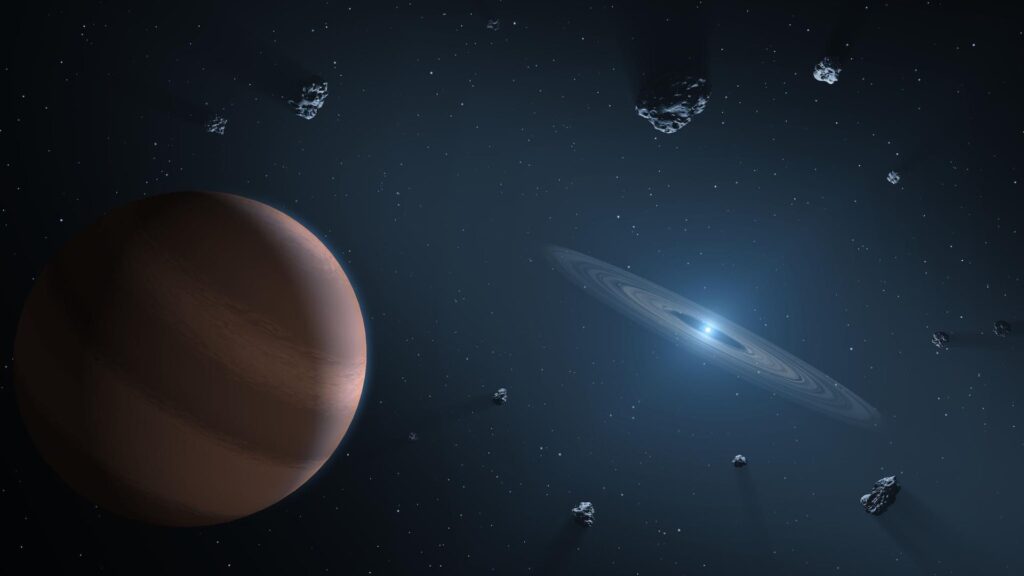
The planets orbiting white dwarf stars have long intrigued scientists as potential long-term homes for alien life. However, these celestial bodies face a significant overheating issue, threatening their habitability. Recent research suggests a surprising savior: Albert Einstein’s theory of general relativity.
White dwarfs, the dense remnants of sun-like stars, are abundant in the universe, with the Milky Way alone hosting hundreds of millions. Their ability to remain warm for hundreds of billions of years makes them compelling targets in the search for extraterrestrial life. Yet, the challenges of maintaining life-supporting conditions around these stars have been daunting.
Challenges of Habitable Zones Around White Dwarfs
Traditionally, the habitable zone around white dwarfs—the region where temperatures allow for liquid water on a planet’s surface—has been considered precariously close, spanning a mere tenth to a hundredth of the distance between Earth and the Sun. This proximity poses a risk when multiple planets are present in the system.
If another planet is nearby, its gravitational pull can distort the orbit of a potentially habitable planet, leading to a highly elliptical path. This results in tidal heating, a process observed in the icy moons of our solar system, which can liquefy their interiors. However, for planets around white dwarfs, this heating can render them uninhabitable.
Einstein’s Relativity to the Rescue
Previous studies, relying on Newtonian gravity, concluded that even slight deviations from a circular orbit could doom a planet. Newtonian gravity, while effective for many celestial calculations, falls short in explaining certain phenomena, such as the precession of Mercury’s orbit in our solar system.
Einstein’s theory of general relativity, which views gravity as the curvature of spacetime, provides a more precise framework. A new study, published on September 30 in the preprint database arXiv, applies general relativity to planets orbiting white dwarfs. The researchers discovered a broader window of habitability than previously thought, thanks to the precession of the inner planet’s orbit, which shields it from being pulled into more elliptical paths and prevents excessive tidal heating.
“The precession of the inner planet’s orbit ‘protects’ it from being pulled into more elliptical paths, which, in turn, prevents runaway tidal heating,” the researchers explained.
Implications for Extraterrestrial Life
While tidal heating remains unavoidable in some scenarios, such as when a companion planet is too large or too close, the study indicates that many planetary configurations could sustain habitable conditions. This revelation opens up new possibilities for the search for life beyond Earth.
Should an alien civilization arise on such a planet, they might independently discover general relativity and recognize its role in their existence. This potential for life around white dwarfs challenges previous assumptions and expands the criteria for habitability in the universe.
Looking Forward
This development underscores the importance of revisiting astronomical models with advanced theories like general relativity. As researchers continue to explore the cosmos, the potential for discovering life in unexpected places grows. The study also highlights the ongoing need for peer-reviewed research to validate these findings and refine our understanding of the universe.
In conclusion, Einstein’s groundbreaking work continues to influence modern science, offering new insights into the mysteries of space and the potential for life beyond our planet. As we advance our exploration efforts, the role of general relativity in shaping our cosmic neighborhood becomes ever more apparent.







